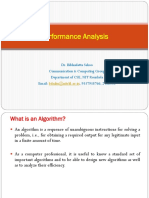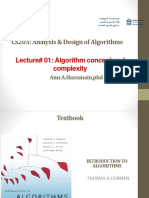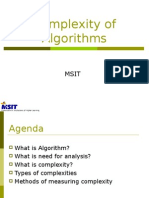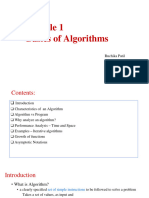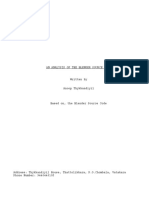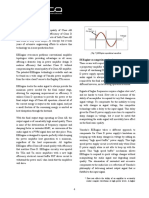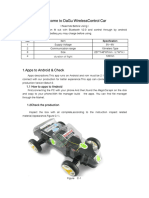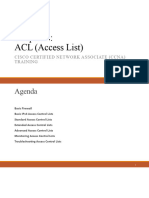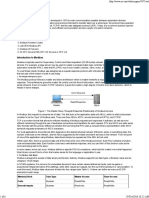0% found this document useful (0 votes)
23 views19 pages6 Introduction To Algorithms-3
The document provides an overview of algorithm analysis, emphasizing the distinction between performance and complexity. It discusses the importance of analyzing algorithms for efficiency, resource requirements, and predicting performance under various conditions. Key metrics for measuring algorithm efficiency include space complexity and time complexity, with examples illustrating different cases and typical running time functions.
Uploaded by
hhasehm4Copyright
© © All Rights Reserved
We take content rights seriously. If you suspect this is your content, claim it here.
Available Formats
Download as PPT, PDF, TXT or read online on Scribd
0% found this document useful (0 votes)
23 views19 pages6 Introduction To Algorithms-3
The document provides an overview of algorithm analysis, emphasizing the distinction between performance and complexity. It discusses the importance of analyzing algorithms for efficiency, resource requirements, and predicting performance under various conditions. Key metrics for measuring algorithm efficiency include space complexity and time complexity, with examples illustrating different cases and typical running time functions.
Uploaded by
hhasehm4Copyright
© © All Rights Reserved
We take content rights seriously. If you suspect this is your content, claim it here.
Available Formats
Download as PPT, PDF, TXT or read online on Scribd
/ 19


























